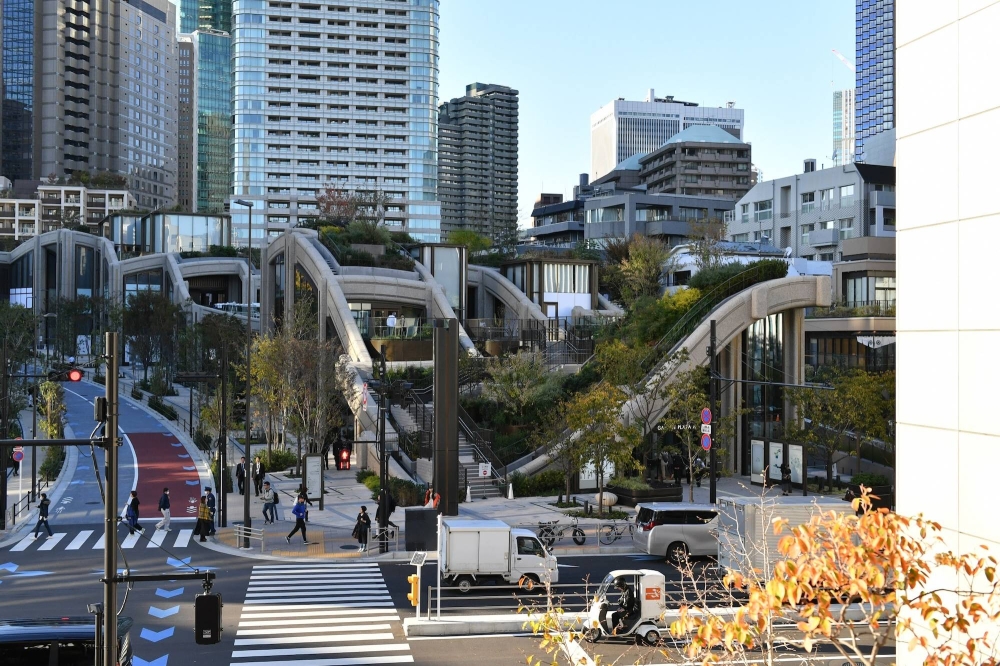Mori Building’s new mixed-use complex in Tokyo, Azabudai Hills, is aiming to redefine city living by integrating extensive green spaces within a high-density urban area.
This reimagined “city within a city,” which opened in the capital’s Minato Ward on Friday, will host approximately 20,000 office workers and 3,500 residents when fully occupied and is expected to welcome 30 million visitors per year.

The facade of Tower Plaza. The shopping zone, in the lower floors of Mori JP Tower, has a range of high-end shopping and dining.
| LOUISE CLAIRE WAGNER
Within this sprawling development is the main Mori JP Tower, which at 330 meters is now the tallest building in Japan and houses both residences and office spaces; the Keio University Center for Preventive Medicine; the primary school campus of the British School in Tokyo; and the relocated teamLab Borderless Digital Museum; and two tall residence towers.
Naturally, a big attraction for both residents and visitors will be the dozens of shopping and dining spots that highlight the refined high end of tradition and modernity.
The overall design concept of Azabudai Hills highlights a balance between gleaming high-rises, designed by Pelli Clarke & Partners, and the lower-level districts filled with waves of greenery. The approach — a departure from traditional urban development practices — is part of Mori Building’s “Vertical Garden City” concept, which prioritizes eco-friendly development and challenges the traditional vision of hard-edged city living.
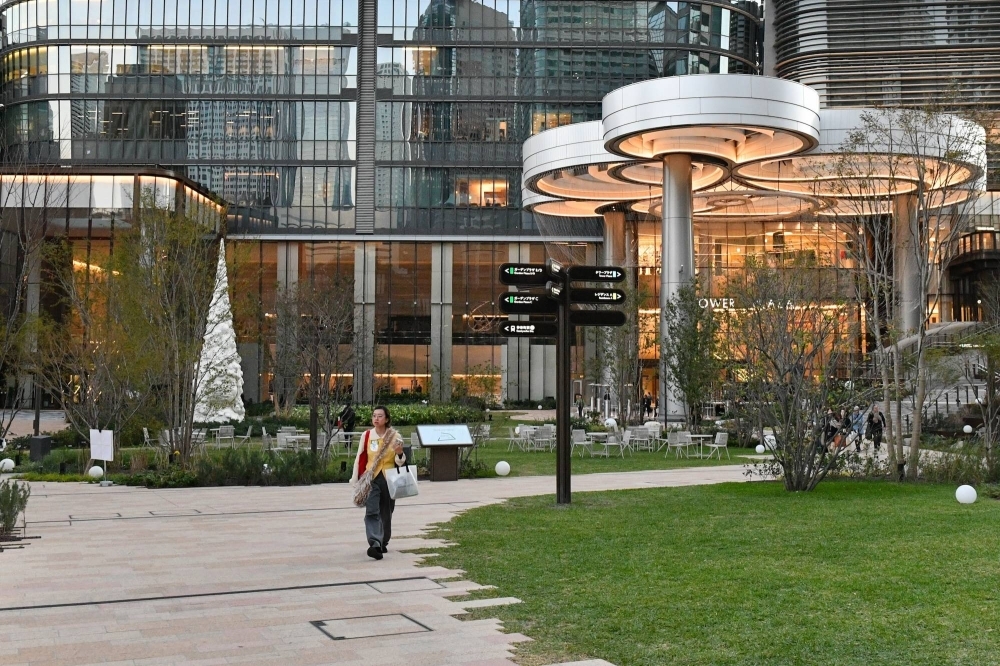
At the core of Azabudai Hills’ Central Green, which has around 320 types of plants, is the Azabudai Hills Arena, which has a sweeping canopy designed by Heatherwick Studio.
| LOUISE CLAIRE WAGNER
One theme of Azabudai Hills is wellness, and the shift toward integrating a natural ecosystem into the city center could indeed improve the overall health of the capital and its inhabitants.
The project comprises about 24,000 square meters of green space, with the central area spanning approximately 6,000 square meters. The structures and landscape design, developed by U.K. firm Heatherwick Studio, showcase a range of plant species, with more than 320 different types planned for the area and deciduous trees in the Central Green area highlight seasonal changes.
A distinctive feature of the lower-level district is its undulating roofs, buttresses and terraces. Both the greenery and the structures themselves, which resemble stone grids molded over gentle slopes, heighten a sense of organic forms. The project also exemplifies the design philosophy of Heatherwick Studio founder Thomas Heatherwick, who has raised eyebrows with his comments about boring urban architecture being a source of stress for city dwellers.
Here is a selection of scenes from the complex’s media preview, held on Monday. (Click on image to enlarge into a pop-up lightbox.)
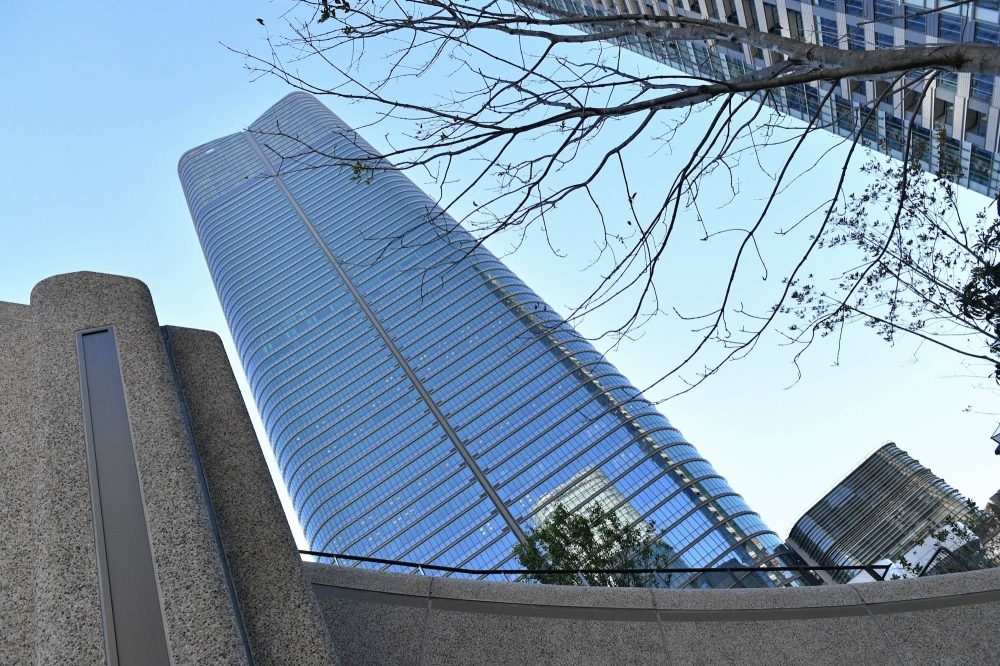
Mori JP Tower, one of three high rises designed by Pelli Clarke & Partners, an international architecture firm, soars to a height of 330 meters, making it the tallest building in Japan.
| LOUISE CLAIRE WAGNER

Sunlight streams through tall windows into the lobby of the 33rd floor.
| LOUISE CLAIRE WAGNER

Yoshitomo Nara’s sculpture, “Miss Forest in Tokyo,” is one of several pieces of purpose-built public art on display in the central area of Azabudai Hills.
| LOUISE CLAIRE WAGNER

The distinctive sloping facade of Garden Plaza, designed by Weather Studios
| LOUISE CLAIRE WAGNER
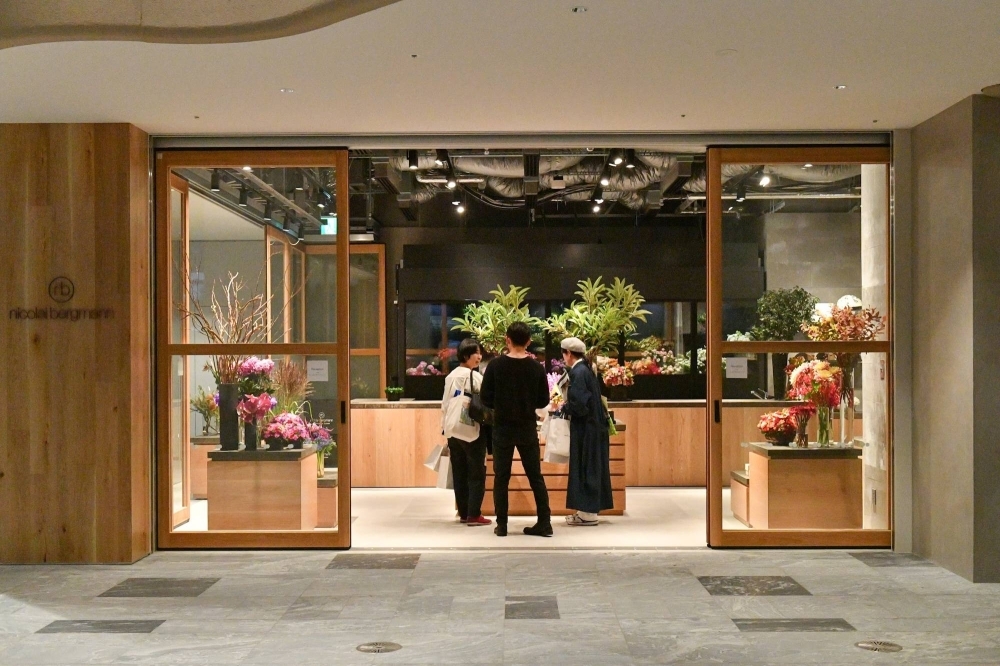
The shop entrance of Nicolai Bergmann, the eponymous shop founded by a Tokyo-based Danish flower artist known for his flower boxes.
| LOUISE CLAIRE WAGNER

A gift shop affiliated with Icelandic Danish designer Olafur Eliasson, whose art is the subject of the inaugural show at the Azabudai Hills Gallery
| LOUISE CLAIRE WAGNER
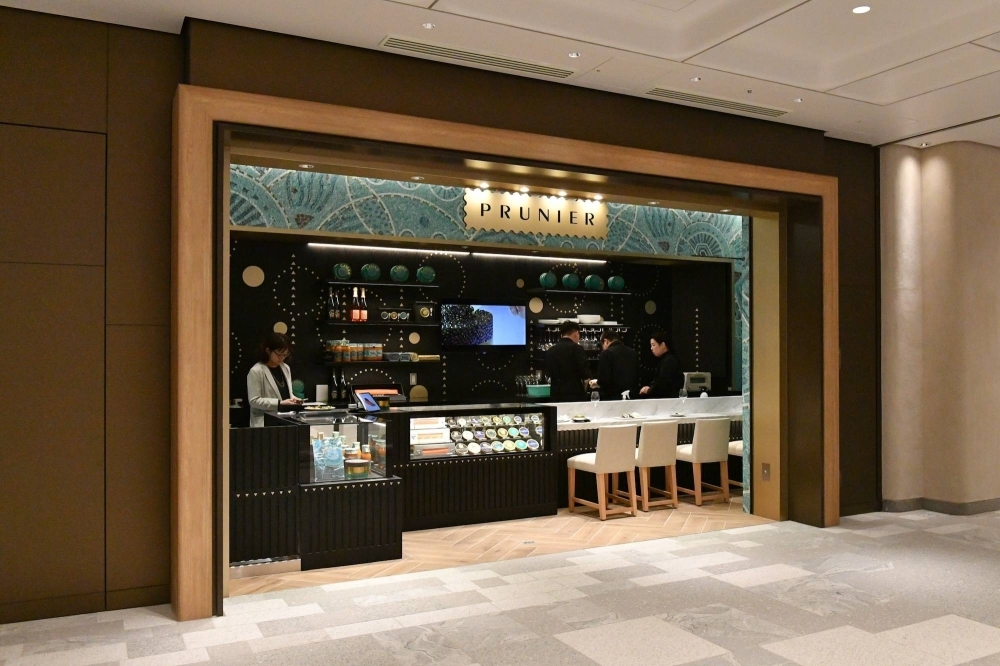
At Prunier, a French brand that dates back over 150 years, visitors can both sample and purchase fine caviar, smoke salmon and champagne.
| LOUISE CLAIRE WAGNER

A view of neighboring Tokyo Tower, a landmark that once dominated the city’s skyline, and the grounds of Zojoji temple.
| LOUISE CLAIRE WAGNER
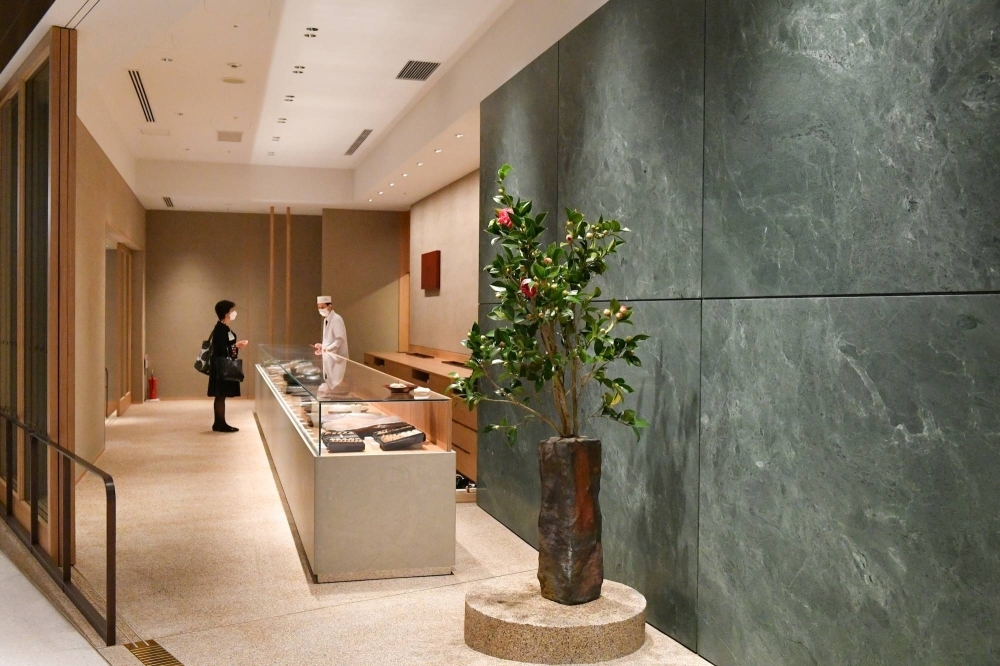
Suzukake, a famous 100-year-old Japanese confectionery-maker based in Fukuoka, features the traditional yet contemporary wagashi sweets showcasing seasonal ingredients.
| LOUISE CLAIRE WAGNER
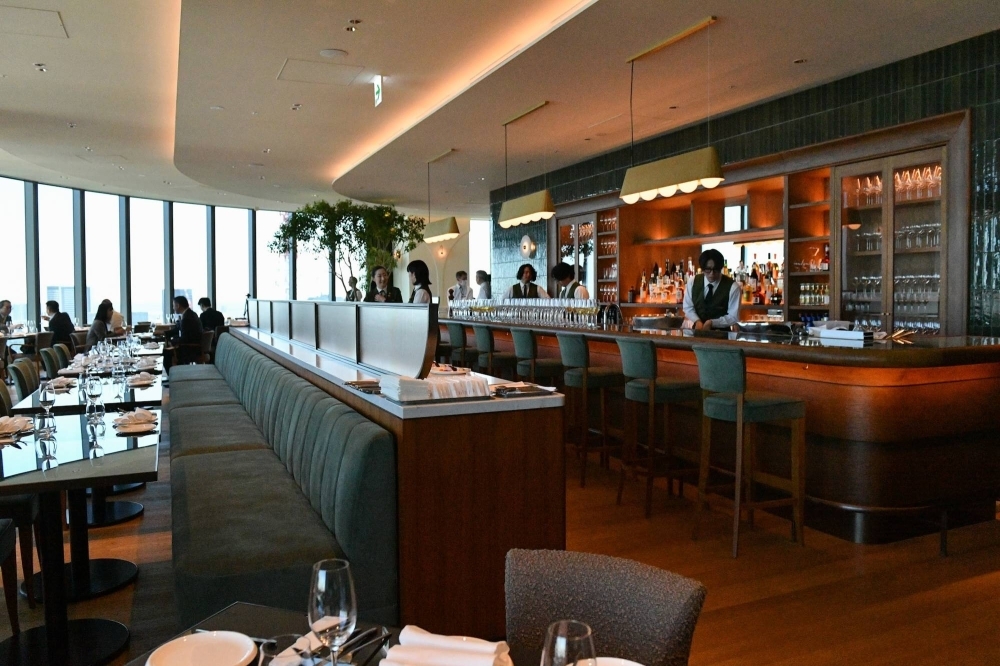
Hills House Dining 33, the grand bistro produced by Kiyomi Mikuni, on the 33rd floor of Mori JP Tower
| LOUISE CLAIRE WAGNER

The convoluted canopy of a structure called The Cloud “floats” over the event space in the central part of Azabudai Hills
| LOUISE CLAIRE WAGNER
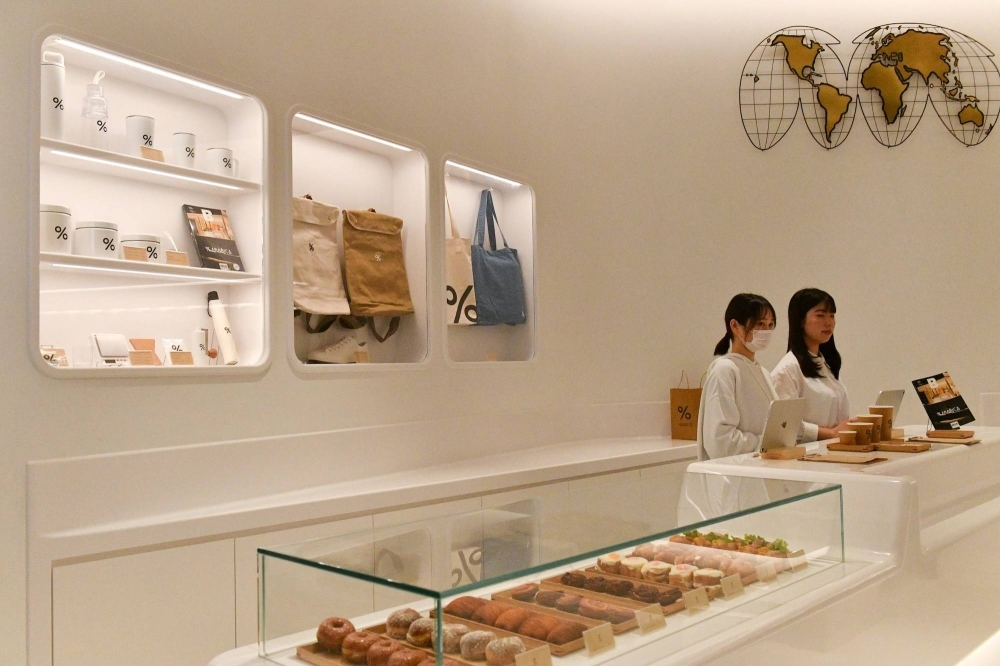
Pastries and specially selected and roasted coffee from around the globe are on the menu at Arabica Tokyo B1 in Garden Plaza.
| LOUISE CLAIRE WAGNER
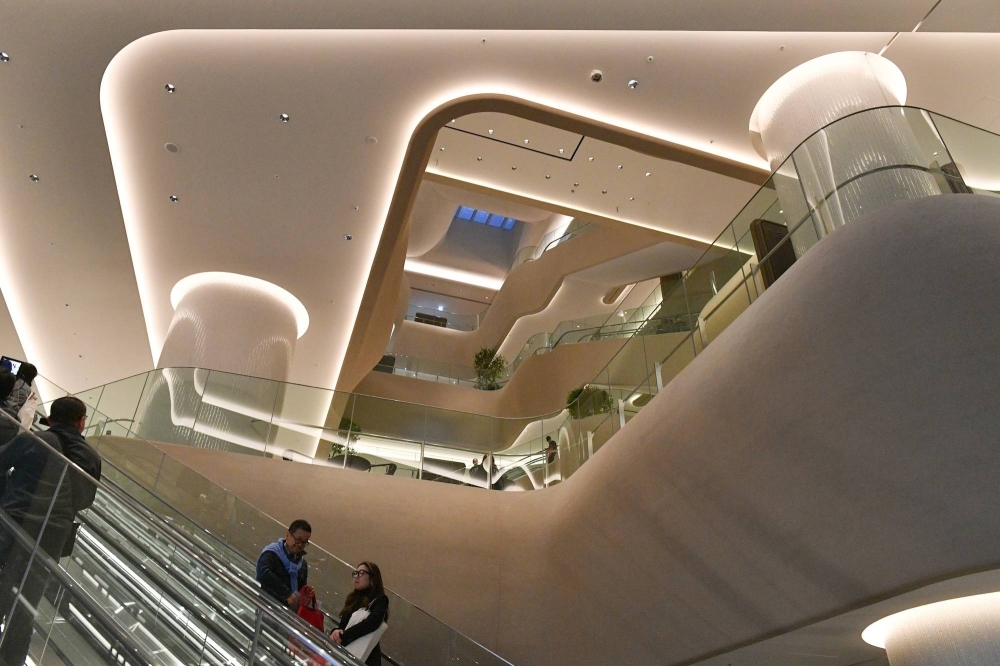
The beveled edges and graduated curves of the floors inside Garden Plaza echo the organic appearance of the buildings exterior.
| LOUISE CLAIRE WAGNER
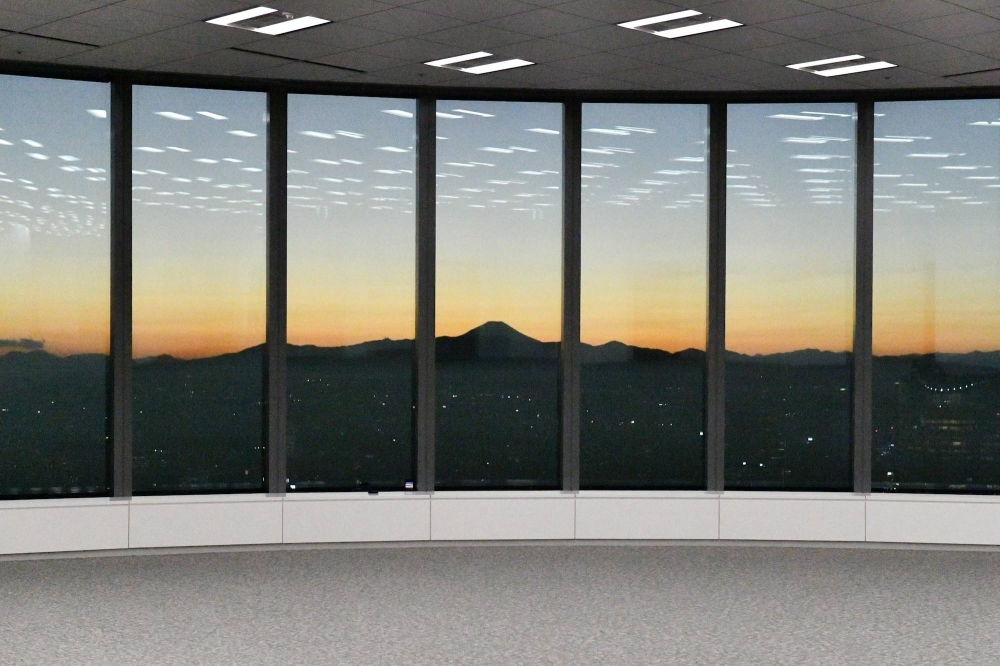
The silhouette of Mount Fuji, seen during sunset from the 52nd floor of Mori JP Tower
| LOUISE CLAIRE WAGNER

